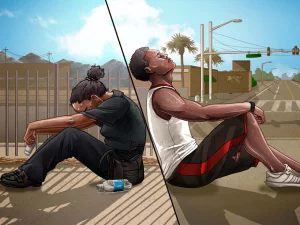The Relationship Between Climate and Justice

We are watching the impacts of climate change unfold outside of our very windows. It is undeniable that the climate crisis is a threat to everyone’s physical and mental health, air, water, food, and shelter. Yet, some socially and economically disadvantaged groups face the most significant risks because of where they live, their health, income, language barriers, and limited access to resources.
In the U.S., these more vulnerable communities and people consist primarily of:
- people of color,
- immigrants,
- low-income communities
- children
- pregnant women
- people with disabilities
- and people for whom English is not their native language.
They will suffer the worst consequences of climate change in the future if we do not recognize the inextricable relationship between climate change and justice (racial, social, environmental).
Environmental and Climate Justice Defined
In my work and speaking with community members, I often hear the terms Climate Justice and Environmental Justice used interchangeably. So please indulge me while I share my definitions and why I believe it is important to understand the difference.
I like to use the EPA definition of Environmental justice – which is “the fair treatment and meaningful involvement of all people regardless of race, color, national origin, or income with respect to the development, implementation, and enforcement of environmental laws, regulations, and policies.” The definition is pretty straightforward – not much in the way of nuances to interpret.
I like to view Climate Justice as Environmental Justice 2.0 – building on the foundation of fair treatment and meaningful involvement. We need to acknowledge that climate change can have various social, economic, health, and other adverse impacts on underprivileged populations. In addition, climate justice recognizes that climate impacts, such as flooding, fires, and extreme weather, can aggravate inequitable social conditions.
This definition of Climate Justice has been adapted from the Mary Robinson Foundation.
“Climate justice links human rights and development to achieve a human-centered approach, safeguarding the rights of the most vulnerable and sharing the burdens and benefits of climate change and its resolution equitably and fairly. Climate justice is informed by science, responds to science, and acknowledges the need for equitable stewardship of the world’s resources.”
And the most crucial part is that climate justice is a movement – a living concept. Climate justice strives to address the inequities head-on through long-term climate mitigation, adaptation strategies, and systems change designed to fix historical wrongs and ensure that the inequities will never happen again.
